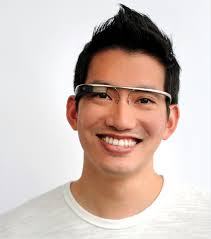Will augmented reality technology be the next big trend?

As the mobile device market becomes concentrated, technology firms have begun exploring options to generate revenue for the future -- including the potential of wearable technology and augmented reality.

When you take hand-held devices and connect them to a body -- whether as a wrist-watch or a headset -- it follows that developments can be made to improve the interactivity of a device. While Apple and Samsung are both rumored to be creating a smart watch, Google Glass is one of the most high-profile examples of taking interactivity beyond a screen through projection.
The next step? Perhaps augmented reality, as explored by Investor's Business Daily. Augmented reality is the idea of enhancing one's environment virtually by the use of mobile devices, headgear or glasses -- a reasonable step beyond mobile applications and on-the-go Internet connectivity.
As Gartner analyst Tuong Nguyen puts it, "users have an extra pair of eyes whether they are using their phone, camera lens or a pair of glasses -- you look at something and based on the content, the location or the image itself, it can pull up relevant information."
Research and development into augmented reality for the consumer and business space has only just begun, but firms including Hewlett-Packard, Qualcomm, Canon and Google are wiling to enter the game. HP and Qualcomm are developing image-recognition software suitable for mobile devices to improve marketing campaigns. Canon has created an augmented reality platform mounted on the head which projects virtual images on to real environments through digital cameras near each eye socket, and although Google Glass was not built with augmented reality specifically in mind, developers are exploring the concept before the launch of the headset later this year.
Audi, Disney and Leap have already developed applications using augmented reality technology, and the trend is likely to continue.
Other companies are also exploring the possibility of a market which could be worth billions in the future. For example, Infinity AR has opened a research and development center in Tel Aviv with the hope of developing an augmented reality platform with digital eyewear, smartphones and tablets.
John Jackson, an analyst for research firm IDC commented:
"There is a gold rush mentality around the space now and it's hardly clear who is going to emerge. We have to think about this as a platform that makes use of lots of different technologies and mashes them up to give you a new way of interacting with the world around you."
Analytics firm ABI Research says that developer investment in augmented reality (AR) applications will total $670 million this year, and the annual amount is expected to exceed $2.5 billion by 2018.
According to the research firm, the main driver for augmented reality development is the expansion of cloud computing. For augmented reality devices to function properly, cloud-based content libraries and rapid access to wireless networks are going to be necessary. In addition, augmented reality is expected to enable the "Internet of Things," the connection of physical objects to virtual reality -- boosted through the adoption of wearable computing products. ABI Research director Dan Shey says:
"In a world where a countless number of physical objects and structures will be connected by sensors, AR can serve as a visualization medium that will make the sensor data situational, bridged to the real-world surroundings.
The consumer aspect is unsurprisingly making most of the headlines here, but we'd expect smart eyewear to initially make more waves in transforming the enterprise. Google Glass, like the smart-glass pioneer Vuzix, will find various use cases in verticals such as engineering, logistics and healthcare."